So I spent two days playing with blogger, poking at layouts and widgets, all the while glancing over at the toe of the sock with no small amount of frustration. The sock was giving me a slight case of knitter's block, not helped by my ballpark calculation that I needed 600 stitches for each centimetre of sock.
Calling them Simple Textured Socks had passed from misnomer to outright lie. The pattern may be 5 stitches and six rows, but it requires enough attentiveness that I was unable to knit it while reading (my habit for stockingette and cables).
I finally put on a TV show, buckled down and started knitting, and was quite pleased to find that the interesting nature of the textures was carrying me along. As I knitted, I was intensely curious to see how the two patterns would grow.
I'm not sure whether to call this sock pattern beautiful or ugly. "Idiosyncratic" certainly describes it. The soles are dense but soft, about three times as thick as knit stitch. Even when flattened, the fact that the sock is so very dense and thick means that it's rounded rather than sitting flat.
The uppers are about half the thickness of the soles, but have an amazing amount of stretch to them. Horizontally, they can stretch to double their width and vertically to half again their size.
As well, and thankfully, the upper part of the sock gathers tightly in the vertical direction. Since the soles take 6 rows to get the same amount of length as two rows of knit stitch, they are incredibly tight in the vertical sense. Horizontally, they have the same density as heel stitch, something that I noted with my test swatch, and am using to my advantage.
For these socks, I've been adopting my usual modus operandi, namely knitting enough of the pattern that I have a clear picture of how it should look, then typing out an actual pattern and following it, amending mistakes and missteps as I go.
To date, there have been three changes to my pattern as written:
- I initially said that some stitches along the sides of the socks should be knit in stockingette, rather than working them in pattern. I was wrong about that; it resulted in two columns of stitches that were trying to grow vertically at a rate three times that of the rest of the sock, resulting in unfortunate bulges.
- Because I was following my Simple Toe-Up Socks pattern, I indicated several rounds of decreases between the ball of the foot and the instep. As it turns out, knitting a dense and stretch material neatly removes the need for that shaping, while making the socks' fit quite close.
- I had planned to knit the gussets and the calf in simple knit stitch, but it's becoming evident to me that changing the stitch that dramatically would look bad.
At the moment, I'm vacillating between four choices:- Knit the gusset and the calf in garter stitch.
Simple, straightforward, but I worry that it'll be too plain. - Knit the gusset in stockingette but knit all stitches that are not decreased as a part of the gusset in garter. This will eventually mean that the back garter stitches and the front garter stitches meet, making the calf a continuous band of garter stitch.
This adds some decoration to the previous pattern, but I'm afraid that what happened before with combining stockingette and a tighter stitch will recur, leaving the gusset to bulge outward. - Knit the gusset and calf in the same pattern as the upper part of the sock, decreasing in pattern.
The only reason to not do this is that it continues the pattern of this sock requiring careful attentiveness. In all honesty, I should bite the bullet, suck it up and knit the pattern. - Knit the upper and back of the sock in pattern, but the gusset in stockingette.
I'm nearly certain that this idea will fail due to bulgy, unsightly gussets.
- Knit the gusset and the calf in garter stitch.
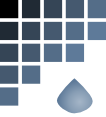








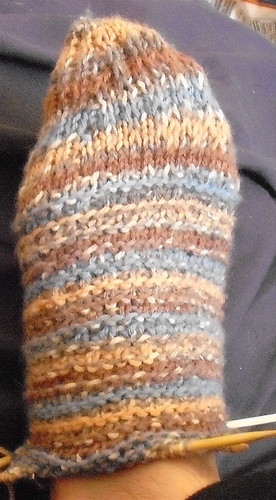
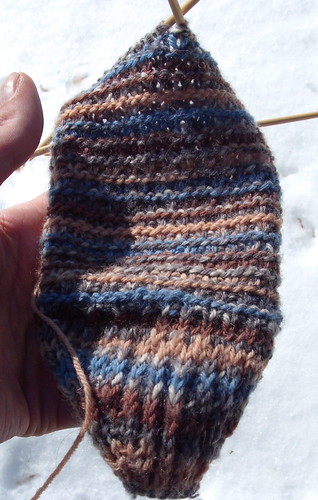
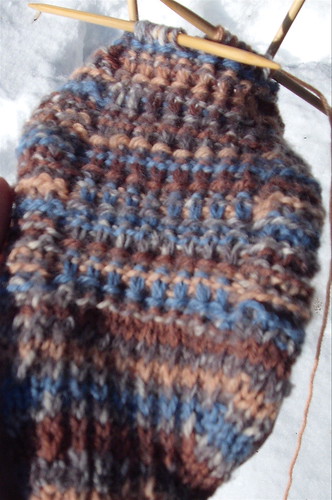
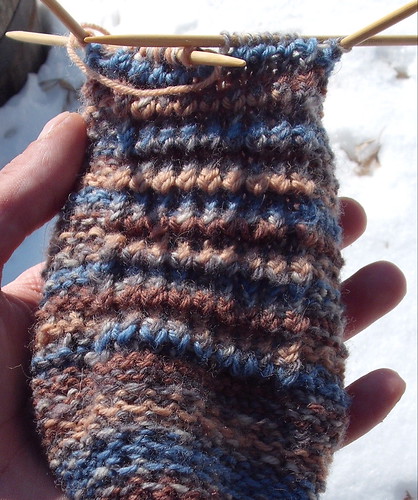
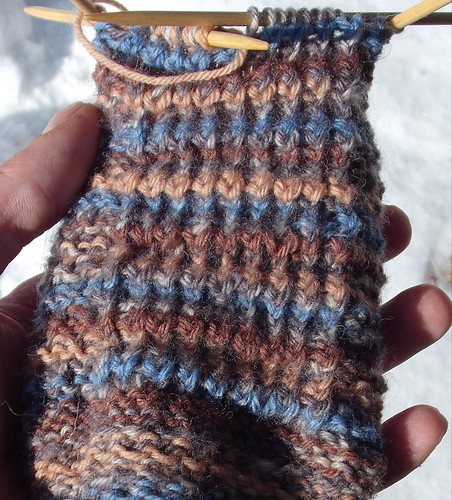
0 comments:
Post a Comment